Stadsgezicht
van
Venetië
Joseph kosuth - George Brecht - Karel Appel - Bruce Nauman - Filippo Tommaso - mapping
The twentieth century brought in a time that could be called “the end of philosophy and the beginning of art.”
"a work of art is a kind of proposition presented within the context of art as a comment on art . . . . That is, if viewed within their context - as art - they provide no information whatsoever about any matter of fact. A work of art is a tautology in that it is a presentation of the artist's intention, that is, he is saying that that particular work of art is art, which means, is a definition of art"
USA | b. 1945 Joseph Kosuth – boek: Art After Philosophy (1969
The early 20th century avant-garde is filled with conceptual and proto-conceptual experiments. The self-consciousness of Marcel Duchamp, exposing the rules of the art-game. The compositions prescriptions of Tristan Tzara. The compositional games of Surrealists. The rigors of Russian constructivism and the anti-art sensibilitly of Futurist and Swiss Dada techniquesÑall of these established the foundation for rule-based (and unruly) work. The later, more "orthodox" conceptualism of the 1960s is tied to artists Joseph Kosuth, Mel Bochner, Sol Lewitt, and a host of others for whom the intellectual high ground of their work provided a needed antidote to the excesses of late-Romantic expressionism and the noise rising to drowning pitch that came from the world of popular culture.
Bronnen: Ubuweb.com - mediatheek
George Brecht (1926-2008)
George Brecht (August 27, 1926 – December 5, 2008), born George Ellis MacDiarmid, was an American conceptual artist and avant-garde composer as well as a professional chemist who worked as a consultant for companies including Pfizer, Johnson & Johnson, and Mobil Oil. He was a key member of, and influence on, Fluxus, the international group of avant-garde artists centred around George Maciunas, having been involved with the group from the first performances in Wiesbaden 1962 until Maciunas' death in 1978.
One of the originators of 'participatory' art, in which the artwork can only be experienced by the active involvement of the viewer, he is most famous for his Event Scores such as Drip Music 1962, and is widely seen as an important precursor to conceptual art. He described his own art as a way of “ensuring that the details of everyday life, the random constellations of objects that surround us, stop going unnoticed.”
Karel Appel (1921-2006)
the remarkable success of the still-young karel appel is not to be explained only by his paintings, but above all by his dutch character and his strong creative personality. dutch is the hard, messaging rebelliousness with which he revolted against the hard, messaging mentality of his compatriots and their (his) culture. it is the same ruthless pursuit of absolute values - and powerful search for truth that urged on other great dutch painters. as a creative personality too appel is irresistible. not latin, playful, unceasingly producing things of beauty, like picasso, but dialectic, ever discovering new questions in every work that he produces and ever answering with a new painting. these qualities - dutch stubbornness and unfrustrated creativity - mathematically determined his place in our culture, yearning as it was for new, true values.
karel appel (born amsterdam, 1921) was one of the dutch painters that unleashed a revolution in the renowned dutch school of painting shortly after the second world war. his work was rejected by nearly all critics and by the public at large and supported only by some friends and fervent followers, among whom amsterdam's world-famous museum director sandberg was notable. following the examples of other dutch painters who found'no favour in their own country (van gogh, mondrian, jongkind, van dongen) appel established himself in 1950 in paris, where his talent developed stormily and was soon recognised everywhere - even in holland. witness the government-sponsored documentary film that was made of him and his work. today the vitalistic, philosophically-minded karel appel is one of the world's most famous and best-paid modern painters. he is a man with his best years still before him, a powerful personality, passionately interested in all the phenomena of his time. success has not spoilt him: he lives frugally, does not smoke or drink, works hard, and has only two extravagances: good food and fast cars.
ust what it is that stirs so strongly at the innermost being of karel appel, the author of the cry, (who also proclaims that he does not paint but that he thrashes the canvas), is difficult to put into rational words. his urge to settle with the past, to overthrow the walls of convention and plough away the rut of aesthetic procedure, is definitely not the urge of anger alone, nor of the discontent of a negative ego. no, it is the manifestation of a dire need for liberty, a call to make way for the right of impulse, the sudden kindling of inspiration.
Bruce Nauman USA (b. 1941)
Bruce Nauman is one of the most important artists of our time. Early in his career, he abandoned painting in favour of sculpture, performance, installation, film, video, photography and neon. This restless exploration of different media reflects a continual questioning and reinvention of his artistic practice. In the 1960s he was one of the pioneers of video art, making a series of groundbreaking videos in which he filmed himself in his studio performing various simple, often absurd, tasks. In subsequent videos he has often used actors to repeat a written text, with nuanced variations, so revealing the ambiguities and dead-ends of language. Sound has always been important to his artistic practice, sometimes as pure audio works, sometimes incorporated as an element in videos or large-scale architectural installations.
Language has always played a central role in Bruce Nauman's work, providing him with a means of examining how human beings exist in the world, how they communicate or fail to communicate. For Raw Materials, he has selected 22 spoken texts taken from existing works to create an aural collage in the Turbine Hall. Removed from their original context, the individual texts and voices become almost abstract elements, taking on new meanings as they are rearranged as part of a single work.
Language has been a key element in Bruce Nauman's work. For the fifth in The Unilever Series of commissions for the Turbine Hall at Tate Modern, Nauman, who is one of the most important visual artists working today, uses the human voice as the focus of a new installation. Robert Storr talked to the artist on his ranch in Galisteo, New Mexico
Filippo Tommaso Marinetti
(1876-1944)
Filippo Tommaso Marinetti was born at Alexandria, Egypt in 1876. He attended a religious school and founded a magazine "Papyrus", fortnightly, cultural, anticlerical. In 1893 he move to Paris where he obtained his baccalaure after he graduated in law at Genoa. He immediately entered the bohemian life of the cafés and became a symbolist. He met Catulle Mendès and Gustav Kahn. In 1902 Deschamps published his "La conquête des etoiles", dedicated to Kahn. In 1899 Sarah Bernhardt recited poems of his which had reviously appeared in "Anthologie-Revue de France et d'Italie".
On completion of his studies Marinetti went to live with his family in Milan and founded the magazine "Poesia" (1905) with Sem Benelli. So far he was to be considered a French poet. In 1905 he published a satirical tragedy "Le Roi Bombance" (King Revel), a gastronomic satire performed in 1909, in which he attacked "things old and worm-eaten, tombs, museums, and libraries". In 1906 he wrote "La ville charnelle" and "A mon Pégase," a poem glorifying the motor-car, as well as "Mafarka le futuriste" , hailed in France but banned in Italy, accused of being pornographic but later absolved. Finally, in 1909, Marinetti issued the first "Futurist manifesto", drawn up in the editorial office of "Poesia" by Marinetti, Buzzi, Cavacchioli, Govoni, Folgore, Mazza and De Maria. The manifesto, issued simultaneously in French and Italian, was published in "Le Figaro" on 20th February 1909 and caused an immediate stir. There followed a series of manifestos on society ("Uccidiamo it chiaro di luna") ("Let us kill the moonlight"), on painting, music, sculpture, literature, lust, the theatre, tactilism, etc., written by painters, musicians, sculptors, but always under Marinetti's influence.
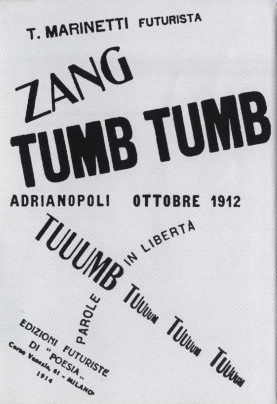
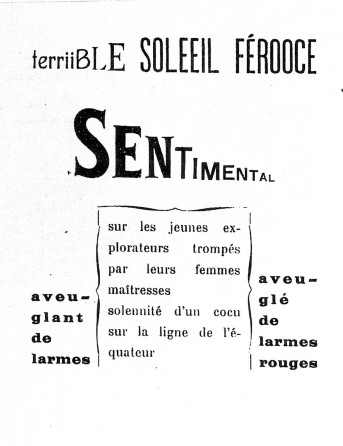
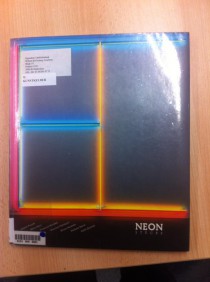
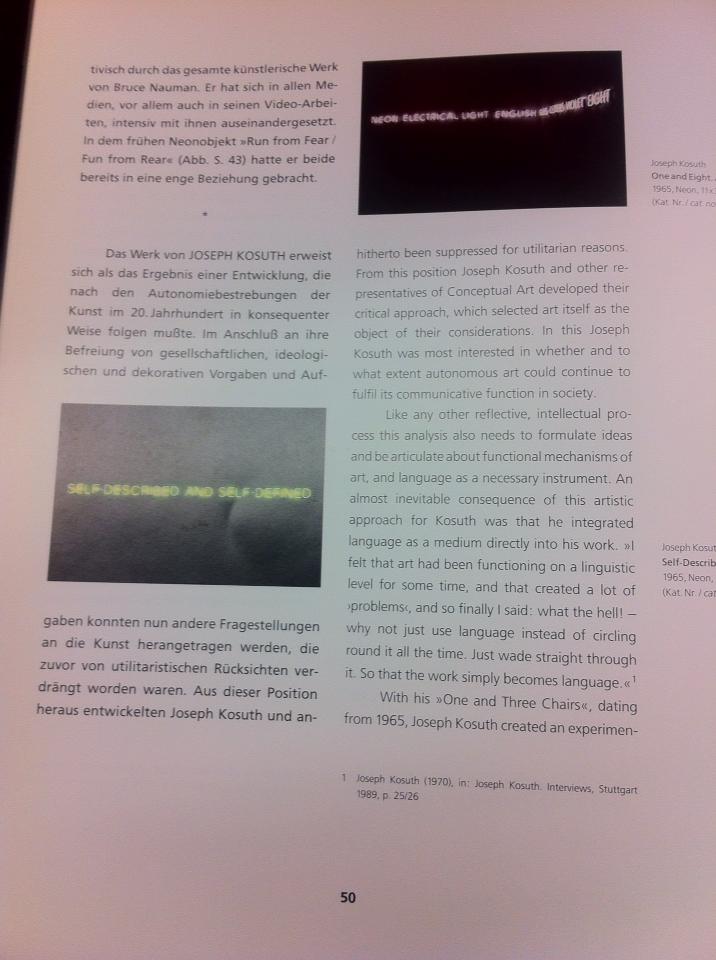
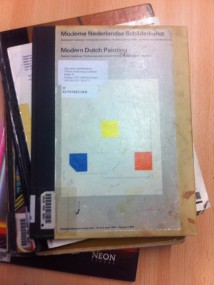
Modern dutch painting
Neon
Neon
werk lijkt op dat van Bruce Nauman
werk lijkt op dat van Joseph Kosuth
Joseph Kosuth en Bruce Nauman, staan ook in hetzelfde boek NEON
Kunstenaars
Routekaart,
Rotterdam & Venetie
kwartaal 1
Begrippenlijst
klankgedichten
klankgedichten
kwartaal 2:
les stof/begrippen
Navigation
Begrippen
Algemene kunst theorie
Honour and Flemming